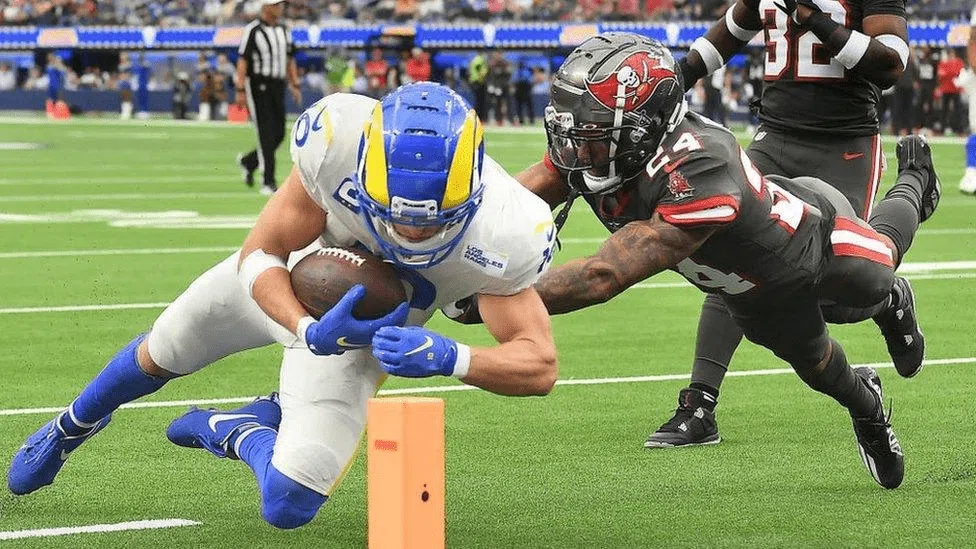Every country has its own favorite pastime, but in the United States, there is always lively debate about which activity truly holds the top spot. The answer often depends on age groups, regions, or even who is asked. However, a few sports consistently dominate the conversation because of their fanbase size, historical influence, and cultural significance. For those interested in the numbers or curious about what makes these games so meaningful, this overview explores America’s most popular sport and uncovers the reasons for its lasting fascination across states and generations.
Factors that determine popularity in sports
The question of the most popular sport in America cannot be settled by a single event or fleeting moment. Instead, several key aspects combine to shape public interest. Attendance, viewership ratings, merchandise sales, and social media buzz all contribute to these sports rankings. History and tradition also play major roles—what families supported decades ago can still influence preferences today.
The youth system in schools and colleges is another critical factor. Some sports thrive thanks to intense college rivalries, while others grow due to widespread community leagues found in nearly every city or town. Local traditions frequently inspire new fans, connecting small communities to larger networks of support throughout each season.
Which sports compete for the top spot?
Several well-known contenders are always vying for the title of America’s favorite sport. These activities remain at the forefront year after year, generating massive enthusiasm from fans nationwide. A glance at any major broadcaster’s schedule during peak seasons quickly reveals where national attention is focused.
Each sport offers something special. Whether it is strategy, speed, teamwork, or pure spectacle, each brings unique qualities that attract spectators of all ages. Regional differences also help shape the rankings, as certain sports carry more weight in specific parts of the country due to longstanding rivalries or climate conditions favoring particular outdoor activities.
The enduring reign of american football

Examining both professional and college levels, american football stands out as the clear favorite in the United States. With championship events drawing millions of viewers and entire neighborhoods gathering to watch together, this game has earned a unique place in American society. Its dominance is fueled by an enormous fanbase size—the figures surpass almost every other discipline.
Beyond packed stadiums, television broadcasts regularly set new records for viewership, especially during playoff season. The combination of fast-paced action, tactical depth, and deep emotional investment keeps fans returning each fall, securing american football’s position at the summit of sports rankings in America for decades.
Popularity of basketball and baseball
Basketball closely follows in terms of excitement and reach, with a storied tradition of urban courts and legendary athletes boosting its appeal from coast to coast. High-scoring games and electrifying playoff atmospheres fuel a dedicated audience that tunes in for the NBA’s drama and the intensity of March college tournaments. Community involvement is widespread, with countless young people playing in schoolyards and dreaming of joining the big leagues one day.
For baseball, the phrase “America’s pastime” still resonates in many households. Its slower pace suits long summer evenings and family gatherings. The statistics-driven nature of the game sparks heated debates about player achievements and historical rankings. Baseball enjoys broad support across the country, with passionate fans committed to preserving its legacy—even as media attention shifts over time.
Where do soccer and ice hockey fit in?
Soccer has experienced steady growth in recent decades, riding a wave of international popularity into mainstream American culture. Youth leagues expand every year, providing a strong foundation for future development. While the fanbase size continues to increase and excitement around major tournaments peaks, soccer still faces stiff competition from longer-established favorites.
Ice hockey adds a distinctive element, particularly in states with colder climates. Intense rivalries and regional pride keep passion high among supporters. Arena attendances remain strong, and the devoted fanbase ensures that memorable moments keep hockey firmly among the nation’s favorite sports—even if it does not surpass the giants at the top of most lists.
Measuring fanbase size and engagement
Numbers provide a transparent look at the true popularity of different sports. Ratings, ticket sales, and social media interactions reveal not only which activity is currently considered America’s most popular sport, but also which ones are rising in importance. Demographic data highlight patterns: younger audiences may gravitate toward trending activities, while older generations tend to stick with traditional powerhouses like american football and baseball.
Teams and leagues invest heavily in increasing engagement through digital platforms and community outreach. Monitoring these efforts gives a clearer picture of shifting loyalties and how newer generations might reshape the sports rankings in the years ahead.
- American football boasts the largest TV audiences for single events.
- Baseball maintains deep-rooted historical connections across multiple states.
- Basketball sees rapid growth thanks to accessibility and star-driven narratives.
- Soccer gains ground with young demographics and immigrant communities.
- Ice hockey dominates certain northern and midwestern regions.
Frequently asked questions about America’s most popular sport
Why is american football considered the most popular sport in America?
American football draws unmatched viewership, both for live attendance and broadcast ratings, especially during its biggest championships. The seasonal format builds anticipation, establishing traditions around weekly games and culminating in highly celebrated finals. Additionally, american football benefits from immense support at the college and high-school level, creating lifelong fans from an early age.
- Most-viewed televised sporting event annually
- Extensive networks of local and collegiate teams
- Massive investment in media coverage and marketing
How does basketball compare to other top sports in terms of fanbase size?
Basketball ranks highly in both viewership and grassroots participation. Its strong presence in cities means many urban areas rally around beloved teams, and viral highlights spread rapidly online. Although the overall audience for basketball generally remains just behind american football, it enjoys significant international traction, adding global dimensions to its following.
| Sport | Estimated U.S. Fans (Millions) |
|---|---|
| American football | 140+ |
| Basketball | 110 |
| Baseball | 90 |
Are sports rankings in America changing among younger generations?
Younger Americans increasingly follow a diverse mix of athletic pursuits, including non-traditional disciplines and esports. While established leaders maintain strong positions, soccer’s momentum among youth and immigrant communities points to a gradual broadening of interests. Changes in school programs and digital influences further shape evolving fandom trends.
- Growth of soccer academies and camps
- Rising interest in mixed martial arts and alternative sports
- High digital consumption shapes exposure to various leagues
Does regional preference affect which sport is considered most popular?
Regional preferences have a significant impact on opinions about the most popular sport in America. Northern and Midwest regions see greater engagement with ice hockey, while southern states typically favor american football. Coastal areas may lean towards basketball and soccer, reflecting community heritage and climate factors that influence which games are most prominent in recreational leagues and local news.
- Ice hockey: Northeast and Midwest stronghold
- Soccer: Southwest and urban metros
- American football: Southern and Midwestern “heartland”

